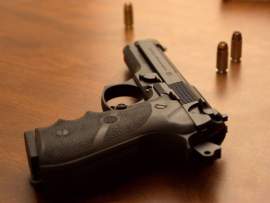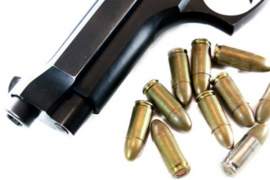
Your Guide to Gun Trade

Due to its inherent nature, international gun trade is an enormous market that is seldom publicized. As a result of their dichotomy, the character and violent disposition of a gun is seldom discussed or made transparent by America's numerous media outlets. When delved into and analyzed, the gun trade, and more specifically the illegal gun trade, is shocking in regards to size and financial significance. The following statistics will help elaborate this often ignored issue.
The Gun Trade
There are currently 640 million small firearms in the world. This vast number equates to roughly one gun for every nine people on earth. 59% of these weapons are owned by civilians, 38% are owned by government agents or the armed forces, and 2.8% are owned by the police.
The gun trade in the United States is worth roughly $4.1 Billion per year. Nearly 28%, or $1.2 billion is comprised of unauthorized or illegal gun trade.
There are currently 1,249 gun manufacturers in the world, these companies operate in 92 countries, and produce roughly 8 million new guns a year.
The 1,249 companies involved with the gun trade also produce 15 billion units of ammunition annually. This is roughly enough to shoot every person in the world three separate times.
The main issue with the illegal gun trade is that 80% of the firearms involved are initially considered legal transactions. Guns like many consumer products exchange hands so many times that the become impossible to trace. Eventually these guns become illegal through illicit transactions.
The largest exporters of guns in terms of annual value (numbers are equal to $1 million dollars):United States (533), Italy (265), Germany (185), Brazil (164), Russia (130), China (120), Britain (85), Japan (65), and Canada (52)
Judging by the above statistics the United States position in the gun trade is equal to the roles of Russia, China, Britain, Japan, Canada, and Brazil combined.
The Illegal Gun Trade
Gun dealers in the United States on average "lose" 82 firearms per year-30,000 guns in total are lost on average each year. When a gun is stolen from a retailer it automatically becomes apart of the illegal gun trade. To make matters worse these statistics are only compiled from 1/5th of the nations gun retailers. Many states do no allow police inspections of retail gun shops by law enforcement agencies.
The Brady campaign has officially labeled a variety of ways that an individual can take advantage of the illegal gun trade:Traffickers pick "easy stores, criminals have friends or strangers purchase guns for them in exchange for money or drugs, an individual will take advantage of the lax bulk purchase laws and buy multiple guns and then re-sell them in the black market, an individual can obtain a weapon through a private transaction at a gun show, and some distributors are loosely regulated by the government, enabling them to sell to anyone at anytime.
The ATF interviewed 6,000 criminals who were found guilty of committing violence with a handgun, and asked each individual how they obtained their weapon: 56% claimed they purchased the weapon legally, 15% said it was a gift, 10% said they borrowed it from a friend, 8% said they illegally traded it, and 5% admitted to stealing it.
The statistics available will shed light on the gun trade and more specifically the illegal gun trade, however, an enormous percentage of firearm transactions are impossible to document due to their undefined nature. A countless number of guns, each year, are obtained through private transactions.
This form of illegal gun trade essentially matches a buyer with a private collection, to a seller in need of a gun. It is similar to children trading baseball card; there is no way to document the transactions, nor even predict how many guns are exchanged each year through this form of illegal gun trade. The market is impossible to regulate and presents the federal government with an enormous loophole.
The gun trade comes in two specific forms:the international trade which is massive and encompasses global manufacturers importing and exporting guns between countries, and the domestic black market or illegal gun trade. The former, although critical, is at least tangible through statistics, while the latter is completely unregulated and seemingly impossible to control.
NEXT: Guide to the Gun Control Reform Movements





















